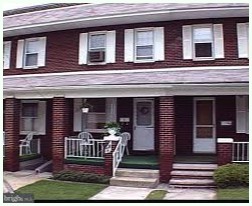Agnosia
The most common symptom or sign of NCD in patients seen by this examiner is a loss of insight about, or even awareness of, their increasing deficits, which are usually obvious to everyone else around them. The inability to interpret information correctly from the senses (what one sees, hears, or feels by touch) leads to inability to recognize things, and this is due to neurological damage and called agnosia. In dementia cases, agnosia is often considered as a sign of advancement; e.g., an old adage says if a patient is afraid [aware of] they have Alzheimer’s, then it isn’t Alzheimer’s, yet. More accurately, the loss of insight is a gradual process probably beginning in Mild NCD ranges if not before, and it is the result of neurological disease or insult which is called “anosognosia”
What is Anosognosia?
The term was first coined in 1914 Joseph Babinski a neurologist more famous for his work on reflexes like the Babinski response or toe curling that occurs when stimulating the bottom of the foot. Anosognosia refers to the lack of recognizing a deficit due to neurological damage, which is very different from the purposeful (conscious or unconscious) “denial” of a deficit as a psychological defense mechanism. Babinski associated this lack of awareness with damage to the parietal lobes, most common on the right side where there is no language comprehension.

This writer has seen patients who neglect one entire side of their body; e.g., a man might not recognize he has failed to shave the right side of his face, even after this is pointed out to him.
In dementia, it helps to realize that a patient may not remember that they forgot. Funny, but not a joke. So the more you try to explain their deficits which they simply do not perceive, the more suspicious the patient may become of you trying to “take over.” Your interest in getting on the checking account makes more sense that does your explanation that they are failing to pay bills which they know is not true! They have no recollection of failing to pay a bill. So, you must be out for no good. The patient knows they have always paid their bills in the past and does not realize there is a problem now with their memory. So, when you demonstrate the lights are turned off because there is no electricity, that must be a problem with the bulbs… And so on. If you persist, the suspicious may turn to paranoid-like behavior – but, not due to sudden-onset schizophrenia, rather it results from anosognosia and your attempts to help which are actually exacerbating a neurologically caused behavioral deficit.
If it is not Psychiatric, Should we be Using Drugs?
When a patient shows agitation should we view it as depression, anxiety and/or psychosis and try to treat that with psychiatric drugs? We should first examine if the absence of meaningful (within the patient’s capacity to appreciate) stimulation may be the real source of their agitation. And, since the patient can’t plan and carry out a self-determined set of fun/interesting activities (like you do on your snow day), this needs to be done for them. We might be better off changing the environment to allow a fairly constant, scheduled series of interesting social events and activities to provide external stimulation– since the patient can no longer self-initiate or self-organize their interactions with the external world given his or her increasingly spare, empty, disorganized and often frightening internal world. Drugs will sedate and thus quell the frightened feelings and the patient will lose the ability to care about their mind’s chaos, but is that a good treatment goal?
This is non-intuitive as one normally does not look for the absence of things as causing a person’s mood changes, instead you look for clear triggers of upset like an argument, or stressors like a financial crisis causing the mood problems. When you see a person sitting quietly for hours staring at a stupid TV infomercial–instead of depression, consider that it might be due to the lack of any other competing source of external stimulation available to the patient. This causes boredom and excessive internalization; i.e., ruminating thoughts leading to agitation that looks a lot like “anxiety” but isn’t. Realize the person can no longer self-organize activities (despite your entreaties to “Go do something!”) as they no longer can self-stimulate by selecting, planning and carrying out the hobbies/activities that they previously enjoyed.
So, What’s the Alternative to Drugs?
This writer supported the psychiatric approach for 20+ years by referring to and working in many geropsychiatric hospitals, but as the research starting coming out showing the antipsychotics did little (other than sedate) for people and he started looking for alternative treatments. Basically, it comes down to distracting the patient by providing interesting activities with plenty of social experiences to keep people from drifting into their internal world which (due to dementia) is typically an empty fearful place. If someone feels “normal” because they know what is expected of them, where they should be, they are not puzzled by the situation they find themselves in, and there is a comfortable routine–then agitation does not occur, and no drugs are needed.

Folks would stop and chat about the weather, her attractive appearance, etc. and she could fully comprehend and respond to conversation, in the moment. She might not recognize her neighbor of 90 years whom she grew up next door to, but they’d still have a pleasant chat every morning. The point here is that grandma felt normal, as she never made


When a patient shows “psychiatric” signs and symptoms like depression/anxiety and/or psychosis should we treat that with psychiatric drugs? When we see agitation should we turn to sedating drugs? Maybe, instead we should think that these are signs of boredom and insufficient stimulation to a person who mind has become limited in the ability to self-motivate and self-intiate productive behaviors leading to an end goal. A hobby (that’s Annie Oakley to the right, and boy did she have a shooting hobby, picture by en.wikipedia.org)
Maybe, we should start thinking about increasing (on a full-time basis) external sources of social stimulation and structured, scheduled activities to productively engage that person in the world. To avoid further retreat into an increasingly spare and empty internal world. Just, maybe… BTW, here’s a typical row house for those of you who haven’t

<– Previous Page ––– Next Page –>